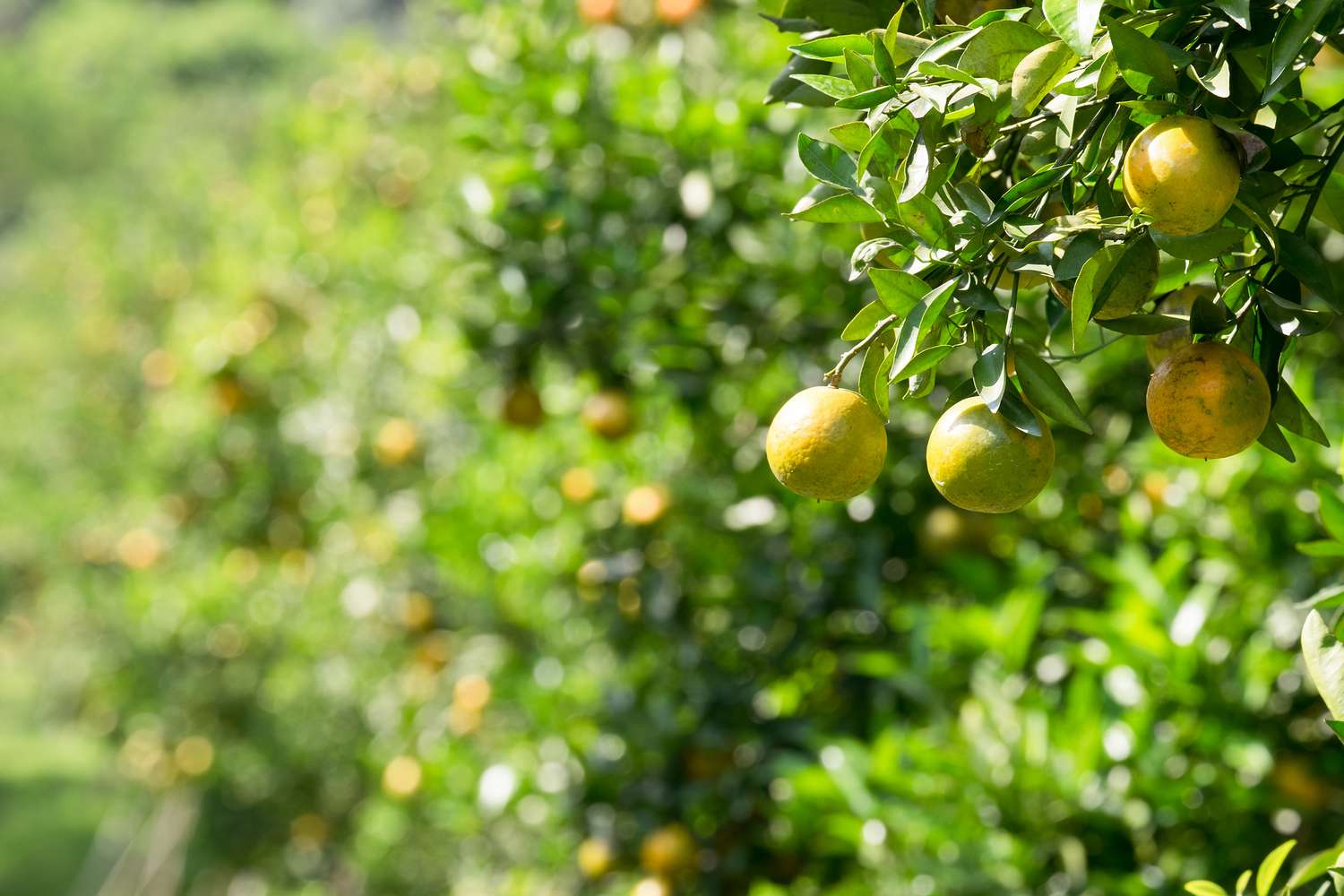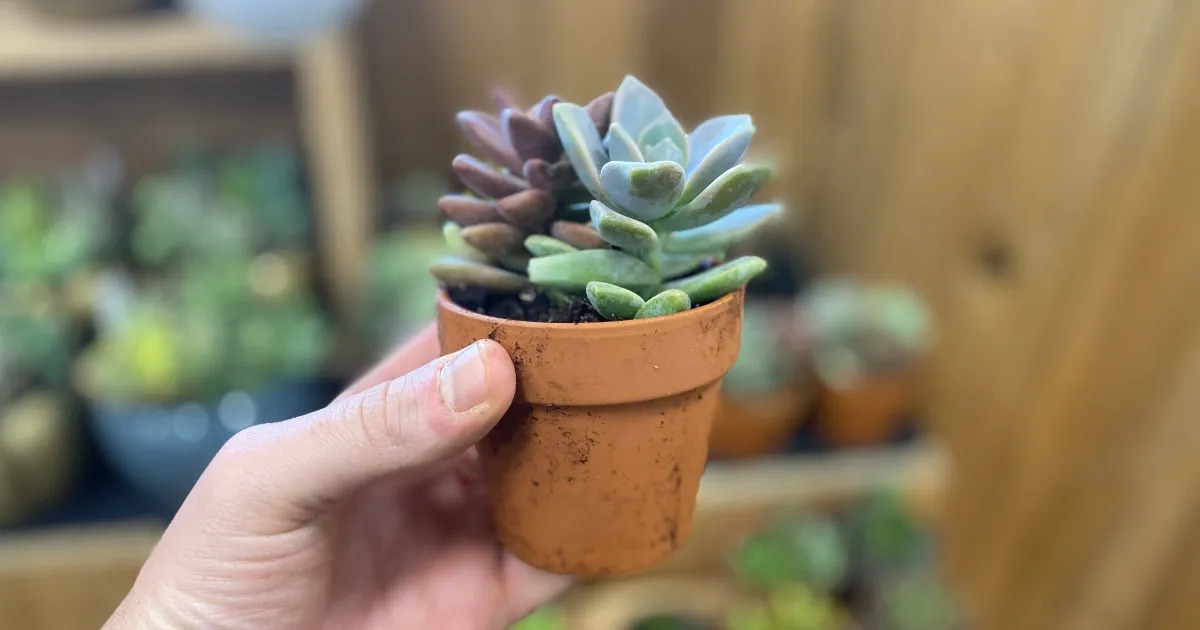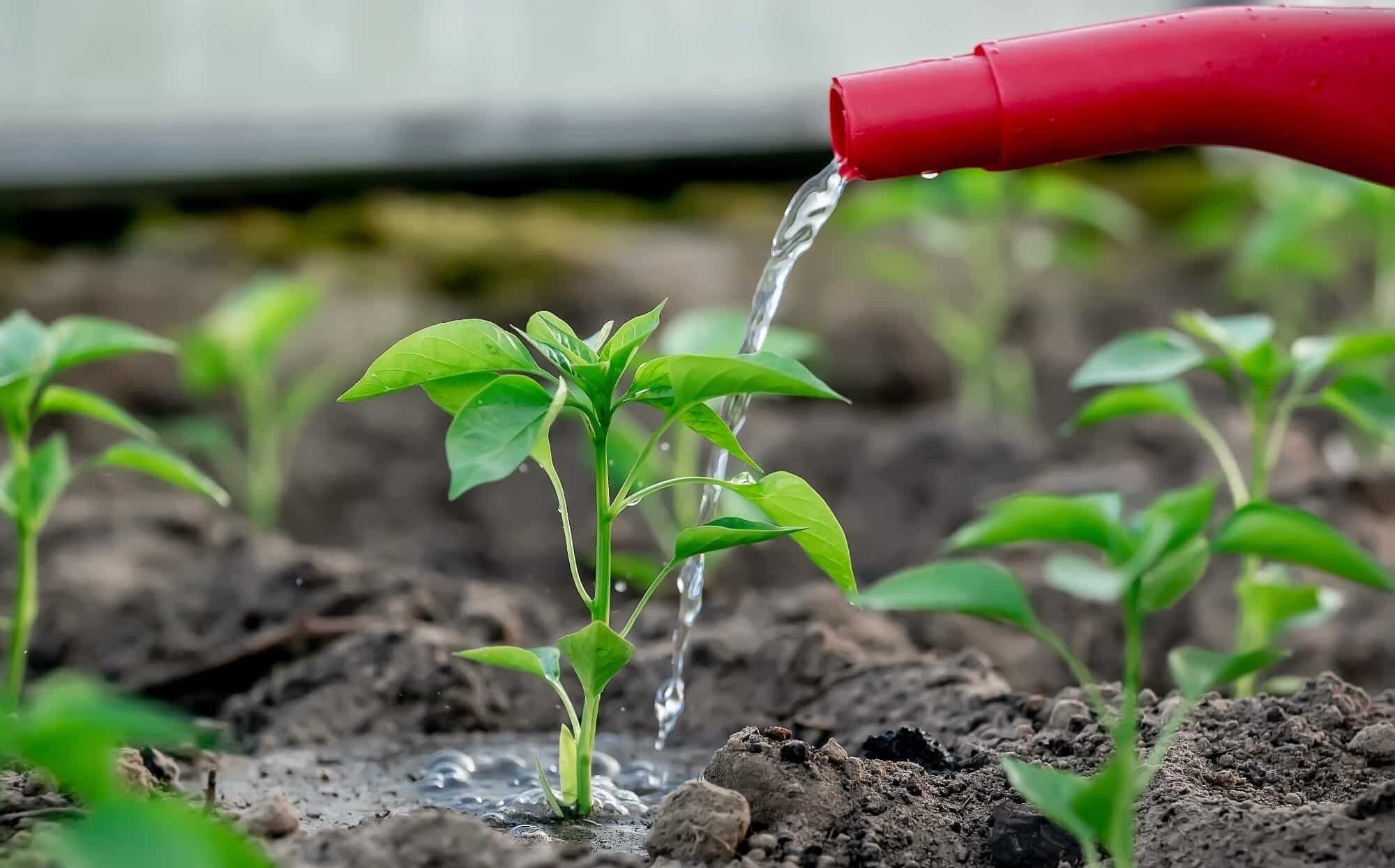Home>Gardening Techniques>Plant Care>How Often To Water Thanksgiving Cactus When Blooming


Plant Care
How Often To Water Thanksgiving Cactus When Blooming
Published: January 9, 2024
Learn the best plant care tips for watering Thanksgiving cactus when blooming. Discover how often to water and keep your plant healthy and vibrant.
(Many of the links in this article redirect to a specific reviewed product. Your purchase of these products through affiliate links helps to generate commission for Chicagolandgardening.com, at no extra cost. Learn more)
Table of Contents
Introduction
Welcome to the wonderful world of Thanksgiving cacti! These stunning plants, known for their vibrant blooms and low-maintenance care requirements, have garnered a loyal following among plant enthusiasts. If you're the proud owner of a Thanksgiving cactus, or if you're considering adding one to your collection, understanding the nuances of proper care is essential for ensuring its health and longevity.
In this comprehensive guide, we'll delve into the art of watering Thanksgiving cacti, particularly when they are in bloom. By the end of this article, you'll possess the knowledge and confidence to nurture your Thanksgiving cactus with the care it deserves.
Whether you're a seasoned plant parent or just beginning your green-thumbed journey, learning about the unique watering needs of Thanksgiving cacti is crucial for fostering a thriving, blossoming plant. Let's embark on this enlightening exploration of watering practices for these delightful succulents.
The Thanksgiving cactus, scientifically classified as Schlumbergera truncata, is a native of the tropical rainforests of Brazil. Its distinctive flattened, segmented stems and jewel-toned flowers make it a captivating addition to any indoor garden. With proper care, these plants can grace your home with an annual display of stunning blooms in shades of pink, red, orange, or white.
Understanding the specific watering requirements of Thanksgiving cacti is fundamental to maintaining their health and encouraging prolific flowering. Factors such as environmental conditions, soil composition, and the plant's growth stage all play pivotal roles in determining the appropriate watering frequency.
As we embark on this journey to demystify the art of watering Thanksgiving cacti, prepare to uncover valuable insights that will empower you to cultivate a flourishing and vibrant plant. Let's dive into the intricate world of Thanksgiving cactus care, with a focus on mastering the art of watering during the blooming phase.
Understanding Thanksgiving Cactus
Before delving into the specifics of watering a Thanksgiving cactus during its blooming phase, it’s essential to grasp the fundamental characteristics of this captivating succulent. The Thanksgiving cactus, also known as the holiday cactus or crab cactus, belongs to the genus Schlumbergera and is treasured for its ornate, pendulous stems and vibrant, asymmetrical flowers.
Native to the coastal mountains of south-eastern Brazil, Thanksgiving cacti are epiphytic plants, meaning they naturally grow on other plants, such as trees, in their native habitat. This unique growth habit influences their watering requirements, as they have evolved to thrive in environments where water is scarce and sporadic.
Unlike traditional desert-dwelling cacti, Thanksgiving cacti are adapted to more humid conditions, and their watering needs reflect this distinction. While they have succulent characteristics, such as water-storing stems, they are not as drought-tolerant as their desert-dwelling counterparts. Understanding this distinction is crucial for providing the appropriate care, especially when the plant is in bloom.
Thanksgiving cacti are known for their stunning floral displays, which typically occur in late autumn, coinciding with the holiday season. This spectacle of vibrant blooms is a testament to the plant’s resilience and adaptability, as it thrives in indoor environments, gracing homes with bursts of color during the cooler months.
As we navigate the intricacies of caring for a Thanksgiving cactus, it’s important to recognize that these plants have distinct growth patterns and physiological needs. By familiarizing ourselves with the natural history and evolutionary adaptations of the Thanksgiving cactus, we gain valuable insights into how to provide the optimal watering regimen, particularly when the plant is adorned with its resplendent blooms.
Armed with a deeper understanding of the Thanksgiving cactus’s origins and growth habits, we are better equipped to tailor our care practices to meet its specific needs. Let’s continue our journey by exploring the factors that influence the watering frequency for Thanksgiving cacti, shedding light on the art of nurturing these remarkable plants during their blooming phase.
Factors Affecting Watering Frequency
Several key factors influence the watering frequency for Thanksgiving cacti, and understanding these variables is essential for providing optimal care during the blooming period. By considering these factors, plant enthusiasts can tailor their watering practices to meet the specific needs of their Thanksgiving cacti, promoting healthy growth and prolific flowering.
1. Environmental Conditions: The ambient environment plays a significant role in dictating the watering needs of Thanksgiving cacti. Factors such as temperature, humidity levels, and air circulation directly impact the rate of moisture evaporation from the plant’s soil. During the blooming phase, it’s crucial to assess the prevailing environmental conditions and adjust the watering frequency accordingly to prevent under- or overwatering.
2. Soil Composition: The type of soil in which the Thanksgiving cactus is grown influences its water retention and drainage characteristics. A well-draining, porous potting mix that mimics the cactus’s natural epiphytic habitat is ideal for preventing waterlogged conditions that can compromise root health. Understanding the composition of the soil and its impact on water retention is vital for gauging the plant’s watering requirements.
3. Pot Size and Drainage: The size of the pot and its drainage capabilities directly affect how the plant interacts with water. A pot that is too large may retain excess moisture, leading to root rot, while inadequate drainage can impede the outflow of excess water. Assessing the pot size and drainage features is crucial for optimizing the watering regimen to support the plant’s needs during the blooming period.
4. Plant Growth Stage: The growth stage of the Thanksgiving cactus, particularly when it’s in bloom, influences its water uptake and metabolic activity. During the flowering phase, the plant may have distinct physiological demands, necessitating adjustments in watering frequency to sustain its vibrant blooms and overall health.
5. Light Exposure: The intensity and duration of light exposure directly impact the plant’s water requirements. Assessing the light conditions in the plant’s environment is crucial, as excessive sunlight or prolonged periods of low light can affect the plant’s metabolic processes and transpiration rates, influencing its need for water during the blooming phase.
By considering these pivotal factors, plant enthusiasts can fine-tune their watering practices to align with the specific needs of their Thanksgiving cacti, ensuring that the plants receive the optimal moisture levels to thrive during the blooming period. Let’s delve deeper into the art of watering Thanksgiving cacti when they are adorned with their resplendent blooms, unraveling the intricacies of this essential aspect of plant care.
How Often to Water Thanksgiving Cactus When Blooming
Watering a Thanksgiving cactus during its blooming phase requires a delicate balance to ensure the plant’s hydration needs are met without exposing it to the risk of overwatering. During this period, it’s essential to tailor the watering frequency to the plant’s specific requirements, taking into account factors such as environmental conditions, soil composition, and the plant’s growth stage.
When the Thanksgiving cactus is in bloom, it’s crucial to monitor the moisture levels in the soil to prevent it from drying out excessively. While these plants are more tolerant of moisture compared to their arid-dwelling cactus relatives, they are susceptible to root damage if the soil becomes overly dry. As a general guideline, watering the Thanksgiving cactus when the top inch of the soil feels dry to the touch is advisable. This tactile assessment helps gauge the plant’s immediate water needs and prevents the risk of underwatering during the blooming phase.
While the tactile method provides a reliable indicator of when to water the Thanksgiving cactus, it’s important to consider the prevailing environmental conditions. Factors such as temperature, humidity levels, and air circulation influence the rate of soil moisture evaporation, necessitating adjustments in the watering frequency. During periods of heightened environmental dryness, such as winter when indoor heating is prevalent, the plant may require more frequent watering to maintain optimal hydration levels when it’s in bloom.
Another effective approach to determining the watering frequency for a blooming Thanksgiving cactus is to observe the plant for subtle signs of dehydration. If the stems appear slightly shriveled or the flowers show signs of wilting, it’s an indication that the plant may require more frequent watering. By closely monitoring the plant’s physical appearance and vitality, plant enthusiasts can fine-tune their watering schedule to support the Thanksgiving cactus during its blooming phase.
It’s important to emphasize that while the Thanksgiving cactus benefits from consistent moisture during its blooming period, it’s equally crucial to avoid overwatering. Excessively soggy soil can lead to root rot and other moisture-related issues, jeopardizing the plant’s health and blooming performance. By striking a harmonious balance between providing adequate moisture and ensuring proper soil drainage, plant enthusiasts can nurture their Thanksgiving cacti to showcase their resplendent blooms with vitality and vigor.
As we navigate the intricacies of watering a Thanksgiving cactus during its blooming phase, it’s essential to approach this aspect of care with attentiveness and sensitivity to the plant’s needs. By integrating these considerations into our watering practices, we can cultivate a flourishing and vibrant Thanksgiving cactus that graces our indoor spaces with its captivating display of blossoms.
Signs of Overwatering and Underwatering
Recognizing the signs of overwatering and underwatering is crucial for maintaining the health and vitality of a blooming Thanksgiving cactus. By understanding these indicators, plant enthusiasts can promptly adjust their watering practices to mitigate potential issues and ensure the plant thrives during its flowering phase.
Signs of Overwatering
Overwatering can have detrimental effects on a Thanksgiving cactus, particularly when it is in bloom. Some common signs of overwatering include:
- Soggy Soil: Excessively wet soil that remains waterlogged for an extended period is a clear indication of overwatering. The soil should be moist but not saturated to support the plant’s hydration needs.
- Yellowing or Browning of Stems: When the stems of the Thanksgiving cactus exhibit discoloration, such as yellowing or browning, it may signal that the roots are being subjected to excessive moisture, leading to potential rotting.
- Wilting and Drooping: Contrary to the expectation, overwatered Thanksgiving cacti may display wilting and drooping, indicating that the roots are unable to function optimally due to waterlogged conditions.
- Foul Odor: A musty or unpleasant odor emanating from the soil is often a telltale sign of overwatering, suggesting that the soil is excessively damp and may be fostering anaerobic conditions detrimental to the plant’s root system.
Signs of Underwatering
Conversely, underwatering can also pose risks to a blooming Thanksgiving cactus. It’s important to be mindful of the following signs that may indicate the plant is not receiving adequate moisture:
- Dry, Crumbly Soil: When the soil becomes excessively dry and crumbly, it signifies that the plant is not receiving sufficient water to maintain its hydration levels. This can lead to stress and wilting.
- Shriveling of Stems: Underwatered Thanksgiving cacti may exhibit signs of stem shrinkage and shriveling, indicating that the plant is experiencing dehydration and requires additional moisture to thrive.
- Dull or Wrinkled Appearance: The overall appearance of the plant may appear lackluster and somewhat wrinkled when it is not receiving adequate water, signaling the need for a timely watering intervention.
- Premature Flower Dropping: Insufficient moisture can cause the plant to prematurely drop its blossoms, compromising the duration and vibrancy of its blooming phase.
By attentively observing the Thanksgiving cactus for these telltale signs, plant enthusiasts can proactively adjust their watering practices to maintain the plant’s optimal moisture balance, supporting its health and blooming performance. Let’s explore how to adapt the watering frequency for a blooming Thanksgiving cactus in different environmental settings, ensuring that the plant thrives in various indoor conditions.
Adjusting Watering Frequency for Different Environments
Adapting the watering frequency for a blooming Thanksgiving cactus to suit diverse environmental conditions is essential for promoting the plant’s well-being and blooming success. Whether the plant resides in a dry, heated apartment or a more humid, cool climate, understanding how to tailor watering practices to different environments is key to fostering a thriving Thanksgiving cactus.
Dry, Indoor Environments
In arid indoor settings, such as centrally heated homes, the ambient air tends to be drier, leading to accelerated moisture evaporation from the soil. In such environments, it’s important to monitor the soil moisture levels closely and adjust the watering frequency to prevent the soil from drying out excessively. Frequent, light watering may be necessary to ensure the Thanksgiving cactus receives adequate moisture without succumbing to dehydration during its blooming phase.
Humid, Cool Environments
In contrast, cool and humid indoor environments, especially those with limited air circulation, can prolong the soil’s drying time. While these conditions may result in reduced moisture evaporation, they can also create an environment conducive to fungal growth and root rot if the soil remains consistently damp. Adjusting the watering frequency to allow for slightly longer intervals between waterings can help mitigate the risk of overwatering in such settings.
Seasonal Variations
Seasonal changes also influence the watering needs of a blooming Thanksgiving cactus. During the dry, heated months of winter, when indoor heating systems are in use, the plant may require more frequent watering to offset the heightened moisture loss. Conversely, in the cooler, less arid months of spring and autumn, adjustments to the watering frequency may be necessary to align with the plant’s evolving needs as it transitions between growth phases.
Light Exposure
The intensity and duration of light exposure in different environments can impact a Thanksgiving cactus’s water requirements. In brightly lit areas, the plant’s metabolic activity and transpiration rates may increase, necessitating more frequent watering to sustain its hydration levels during the blooming period. Conversely, in low-light environments, where the plant’s metabolic processes are subdued, the watering frequency may be reduced to prevent waterlogged conditions.
By acknowledging the influence of diverse environmental conditions on the Thanksgiving cactus’s watering needs, plant enthusiasts can adeptly customize their care practices to support the plant’s health and blooming performance. With an understanding of how to adapt the watering frequency for a blooming Thanksgiving cactus in varying environments, we can cultivate thriving, resplendent plants that enrich our indoor spaces with their captivating floral displays.
Conclusion
Embarking on the journey of nurturing a blooming Thanksgiving cactus is a gratifying endeavor that rewards plant enthusiasts with the splendor of vibrant, jewel-toned blooms. As we’ve explored the art of watering Thanksgiving cacti during their blooming phase, we’ve gained valuable insights into the nuanced care practices that support the plant’s health and blossoming vitality.
Understanding the unique characteristics of the Thanksgiving cactus, from its epiphytic origins to its distinctive watering needs, is fundamental to providing attentive care during its blooming period. By considering factors such as environmental conditions, soil composition, and the plant’s growth stage, we can tailor our watering practices to meet the specific needs of the Thanksgiving cactus, fostering robust growth and prolific flowering.
Recognizing the signs of overwatering and underwatering empowers us to proactively adjust our watering frequency, ensuring the plant maintains an optimal moisture balance that sustains its vitality and blooming performance. By attentively observing the plant for subtle cues and tactile indicators, we can refine our watering practices to support the Thanksgiving cactus during its resplendent blooming phase.
Adapting the watering frequency to suit diverse environmental settings, from dry, heated interiors to cool, humid climates, enables us to create an ideal growing environment that nurtures the Thanksgiving cactus’s well-being. By acknowledging the influence of seasonal variations and light exposure on the plant’s water requirements, we can fine-tune our care practices to align with the plant’s evolving needs, fostering its flourishing health and blooming success.
As we conclude this insightful exploration of watering practices for blooming Thanksgiving cacti, it’s evident that the art of nurturing these captivating succulents is a harmonious blend of attentive observation, adaptive care, and a deep appreciation for the plant’s resilience and natural beauty. By integrating these principles into our care regimen, we can cultivate thriving Thanksgiving cacti that grace our indoor spaces with their enchanting floral displays, enriching our lives with their enduring charm and vitality.
May this knowledge empower you to embark on a rewarding journey of caring for blooming Thanksgiving cacti, cultivating a deep connection with these remarkable plants and reveling in the joy of witnessing their resplendent blooms year after year.






